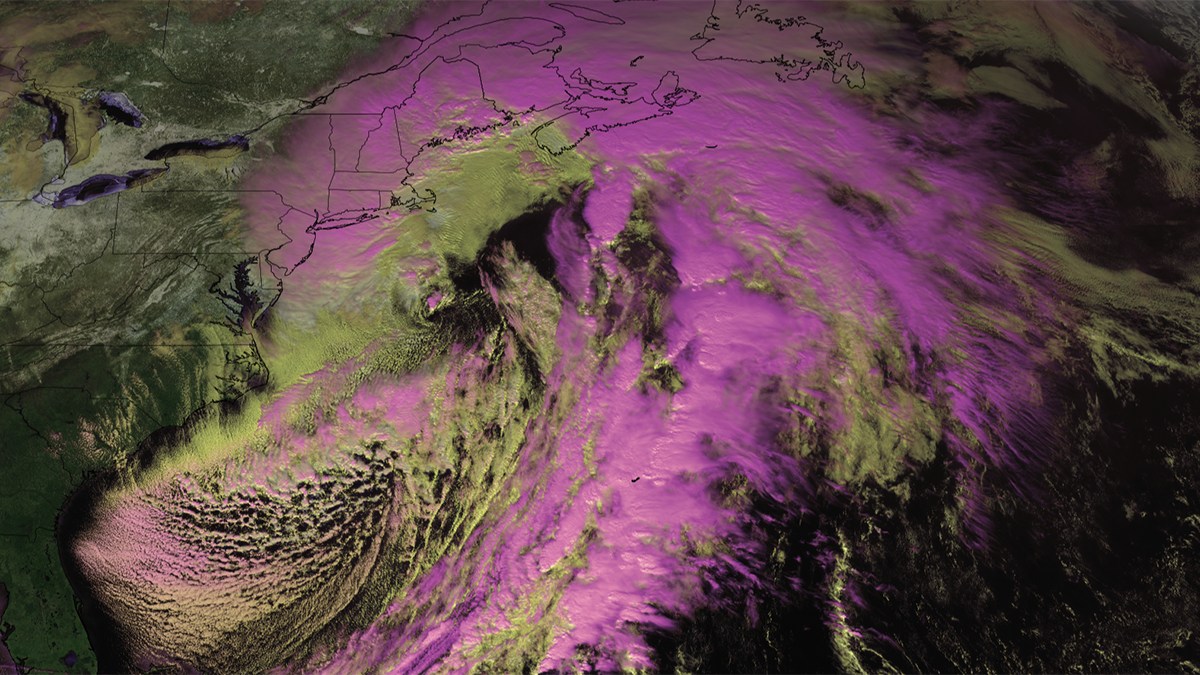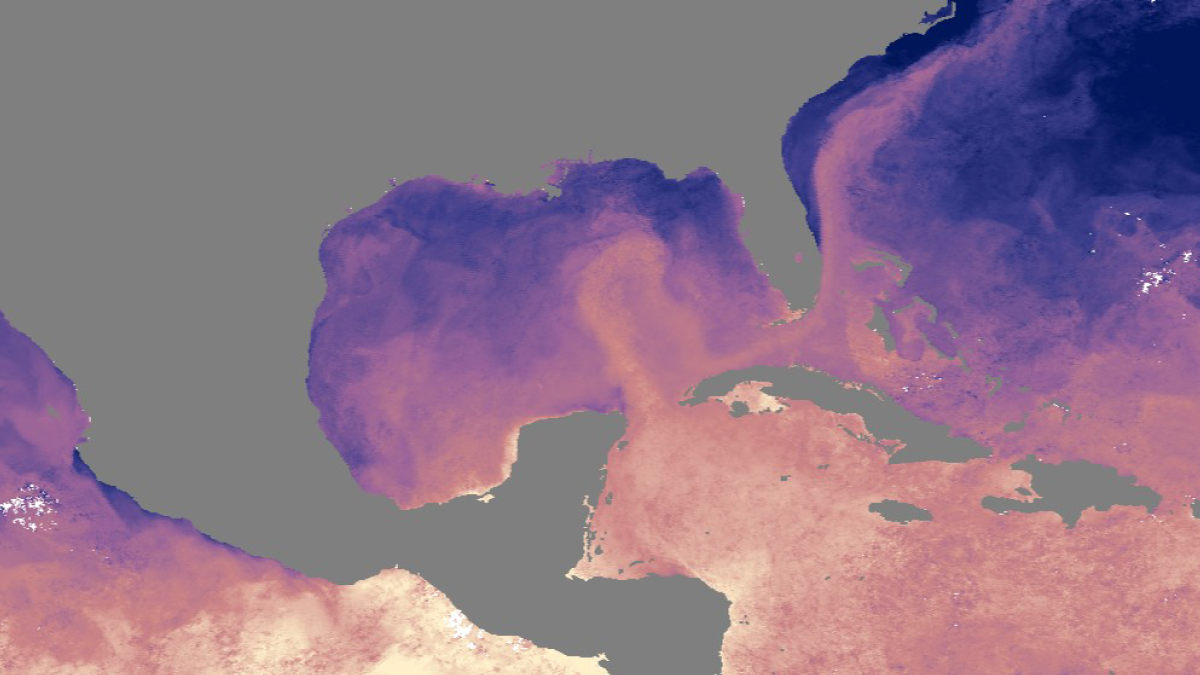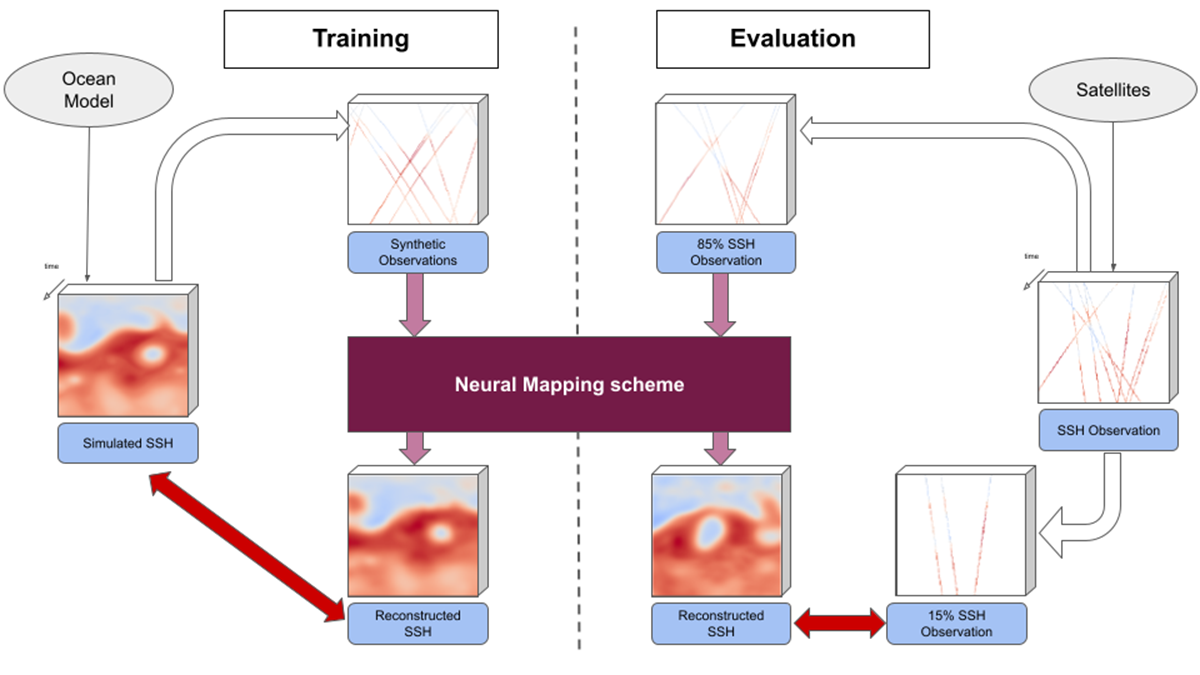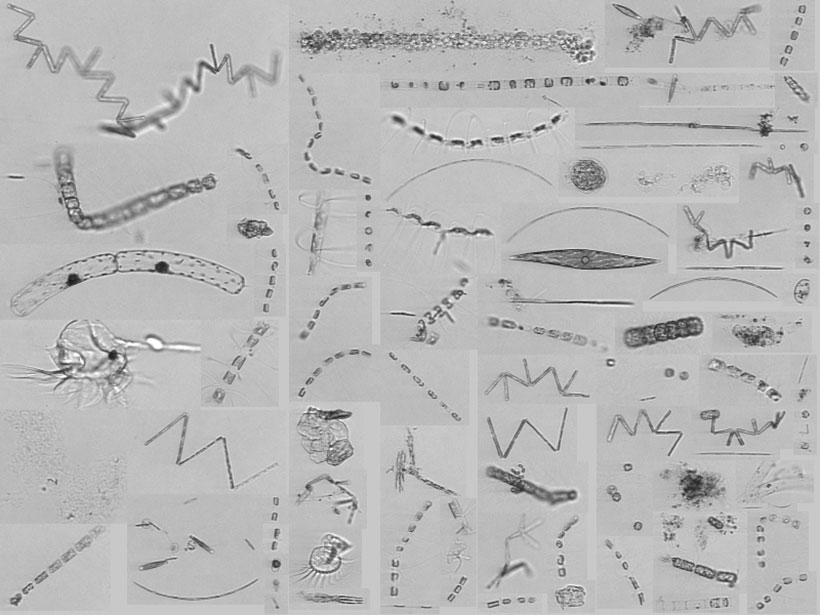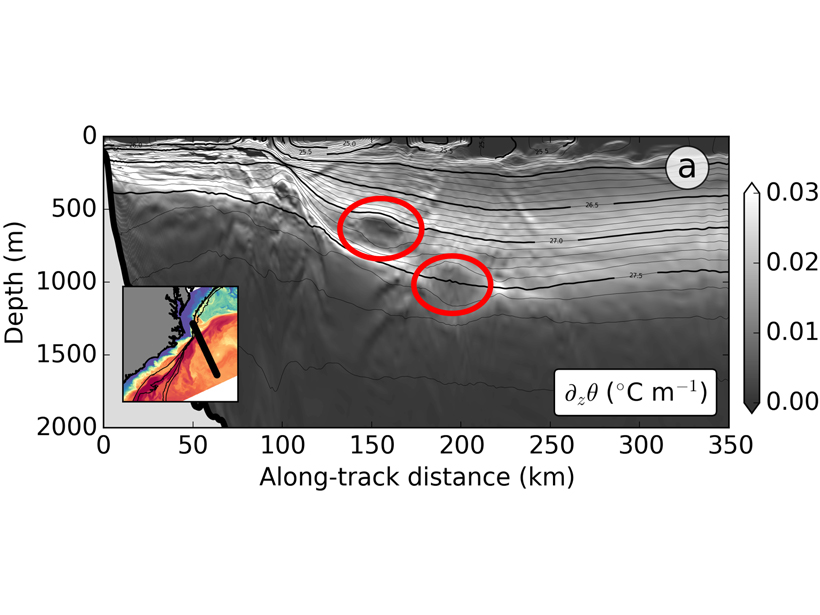One new study identifies a 17% increase in the destructive potential of the strongest nor’easters, while another bolsters links between Arctic ice melt and dangerous blizzards.
Gulf Stream
Ocean Current Affairs in the Gulf of Mexico
Multinational and multidisciplinary studies of the past and present of the Gulf’s Loop Current are helping to reveal what might be in store for coastal communities.
Physics + Machine Learning Provide a Better Map of Ocean Measurements
A new study offers a compelling example where the merger of dynamical modeling, machine learning, and ocean measurements enhances oceanographic understanding, monitoring, and mapping.
Gulf Stream Closes the Valve of the Labrador Current
Virtual particles released in the Labrador Current revealed that the westward penetration of the current into the shelf seas is inhibited by warm core rings emanating from the Gulf Stream.
Gulf Stream Intrusions Feed Diatom Hot Spots
Previous research suggested that the intrusion of low-nutrient Gulf Stream water into the Mid-Atlantic Bight would reduce productivity, but a new study finds that it can also lead to chlorophyll hot spots.
Wrinkles and Bumps in the Gulf Stream
Observations of tiny vortices in the ocean interior provide hints of a dynamic richness of the deep ocean that we are yet to fully appreciate.
Gulf Stream Slowed as Hurricanes Struck
Hurricanes Jose and Maria temporarily decelerated this powerful ocean current’s flow last year, according to data from an ocean glider that rode the stream between Florida and Massachusetts.
Packing Science into a Shipping Vessel
Oleander Workshop II: 25 Years of Operations; Narragansett, Rhode Island, 26–27 October 2016
Gulf Stream Destabilization Point Is on the Move
Westward migration of the wavelike Gulf Stream pattern could have big effects on ocean mixing and heat transport off the U.S. East Coast.
Satellite Salinity Data Improves Gulf Stream Eddy Detection
A pronounced contrast in salinity between the Gulf Stream and current rings makes satellite salinity measurements valuable.

